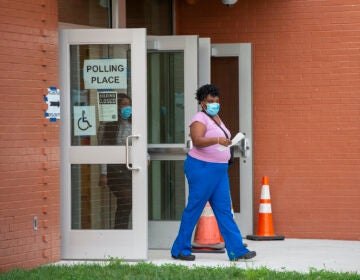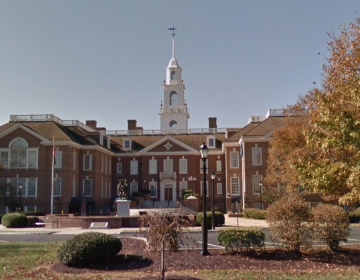Wilmington, New Castle County still short on participation as census deadline looms
In the midst of a court battle over the date of the census deadline, Delaware leaders are urging residents to stand up and be counted.

Wilmington, Delaware (Tim Kiser/Wikimedia Commons)
It’s been a unique year for the U.S. Census. The door-knocking campaign that traditionally follows up the mail and phone efforts to count residents usually runs from mid-May through the end of July. COVID-19 restrictions delayed the door-to-door effort, and that may have hampered attempts to get a full count.
There has been some question over when the Census Bureau would finish its count. Earlier this year, the White House urged the bureau to end the count on Sept. 30, rather than Oct. 31, as originally planned. On Thursday, a federal judge in California ordered the Trump administration to abandon last-minute changes to the 2020 census schedule and extend the time for counting an additional month. The administration is expected to appeal that ruling.
Regardless of that dispute, local leaders in Delaware are making a push this weekend to get more people counted.
Census participation in Wilmington, Delaware’s largest city, is just over 54.5%. That’s well below the rate at this time in 2010, when 62% of residents had been counted. At this time a decade ago, nearly 71% of the New Castle County population had participated. This year, only 62% of New Castle County residents have been counted.
Higher count means more federal money
“There are big dollars at risk, millions of dollars of federal money that we will lose each year for the next 10 years,” said Matt Meyer, the New Castle County executive. “Money for schools, and jobs programs, economic development, housing programs, and all sorts of federal money that comes in.”
During the pandemic, New Castle County got $322 million in federal funding through the CARES Act. That funding is due in part to the large size of the county’s population, a number tabulated by census-takers 10 years ago.
“Right now, we’re using CARES Act money to feed people, to make schools more accessible for those that are learning, we are providing all sorts of testing sites,” he said. “All sorts of resources like that that we would likely not have access to if not for people doing their census.”
“Throughout our history, the importance of counting all residents in the national census has been demonstrated time and time again,” said Wilmington Mayor Mike Purzycki.
The city is joining the county at several community events on Saturday in hopes of increasing participation. From noon to 4 p.m., the Census Caravan will meet with people at Helen Chambers Playground, 24th and Market Streets, Prices Run Park and Surratte Park. The pep-rally style events will include music, food, and giveaways for those who complete their census forms.
In southern Delaware, there have been concerns about the ability to count the large Latino population, especially after the Trump administration tried to add questions about citizenship to the census. Several large sections of Delaware’s southernmost county are included in the Census Bureau’s “hard-to-count” population map. Just 53% of Sussex County residents have responded to the 2020 Census so far.
An extra seat?
There’s an added urgency for Delaware’s census tally this year.
“[There’s] a chance, if we do well and there’s an increase in population, that we get a second congressional representative. It’s a small chance, but again, get out there, make sure you are getting enumerated,” Meyer said.
Currently, Delaware is one of seven states that have only one member of the U.S. House. According to the Pew Research Center, Delaware has the second-highest ratio of residents to U.S. representative in the country. If the state were awarded a second seat in the House, it would likely have the lowest ratio.
The state’s estimated population was 973,764 in 2019, according to the Census Bureau. If those residents were split between two representatives, the ratio of constituents would likely fall below Rhode Island, which has two representatives in the U.S. House for little more than 1 million residents.
All 435 seats in the House are reapportioned after the census every decade. Whether that process would include an extra seat for Delaware is anyone’s guess.

Your go-to election coverage
WHYY is your source for fact-based, in-depth journalism and information. As a nonprofit organization, we rely on financial support from readers like you. Please give today.






